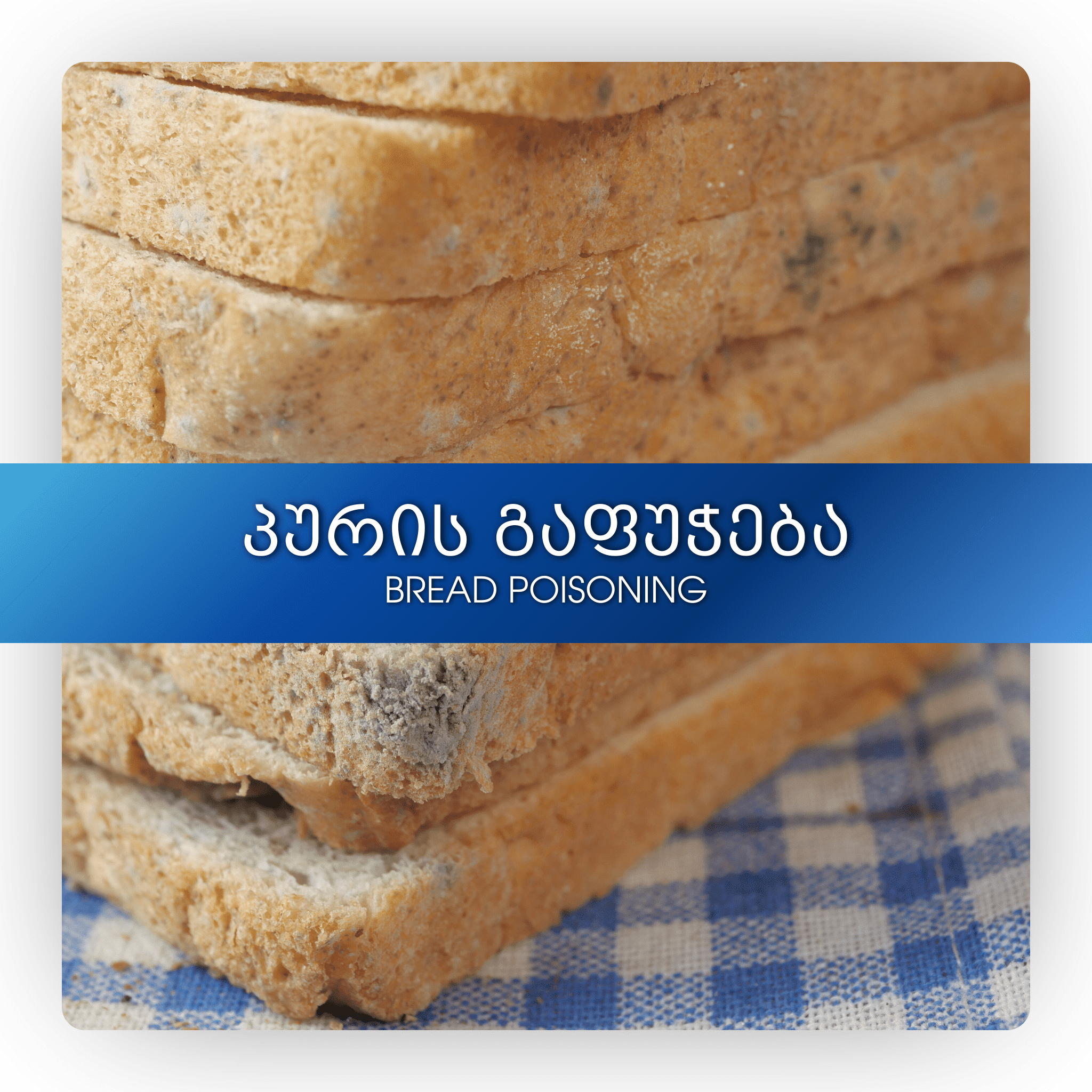Bread Poisoning
Industrial grains, flour, cereals must meet hygienic requirements according to the content of toxic elements, pesticides and radionuclides. Harmful impurities are the seeds of weed plants for grains. Weed toxins give bread a bitter taste and can cause food poisoning. They are resistant to heat treatment and do not fall apart during baking.
When the air is relatively humid, the microorganisms in the flour, which were in an inactive state, begin to multiply. The baking properties of bread decrease when the flour is kneaded, the flour acquires an unpleasant smell, which is usually transferred to the bread.
Bread baked due to violation of technological processes and temperature-humidity regime may have the following defects: sticky, moist, inelastic, with less porous pulp, crust with cracks, sour taste and smell. Bread that has a technological defect is most often affected by spoilage by microorganisms.
The surface of the bread taken out of the bakery is practically sterile, and only in the heart of the bread some number of microorganisms can be observed, but during the cooling, transportation and sale of the bread, spores can be found, which causes microbial spoilage.
When the air is relatively humid, the microorganisms in the flour, which were in an inactive state, begin to multiply. The baking properties of bread decrease when the flour is kneaded, the flour acquires an unpleasant smell, which is usually transferred to the bread.
Bread "chalk" disease is caused by certain actinomycetes and yeast-like fungi that get mixed with flour in the dough and do not die during baking. In ready-made bread, the pathogen can enter the surface of the bread, and then through cracks in the surface of the bread, it can spread into the core of the bread. Manifested as white, dry, powdery inclusions similar to chalk, bread loses its appearance and has an unpleasant odor.
Pigment spots - wheat bread can be damaged by pigment-producing microorganisms (bacteria, yeasts). Yellow, pink, red and other spots appear in the pulp of the bread. Most often, red spots appear on baked bread, reminiscent of drops of blood. Bacterial cells contain the red pigment prodigiosin. It develops at 25°С, in conditions of increased humidity, less acidity and free supply of oxygen. Bright red mucous spots develop on the surface, which form an abscess. The bacterium is non-pathogenic, but the bread is unfit for food due to the deterioration of organoleptic properties.
Fusarium ("plant AIDS") - pink grains are observed in wheat. A toxin that enters the bloodstream through the digestive system will paralyze the immune system.
Mold is a relatively widespread type of bread spoilage. This type of damage occurs during improper storage. When the bread is packed relatively tightly, at high humidity and temperature, mold spores that get on the finished bread develop quickly, especially when the bread has cracks. Bread gets an unpleasant smell and taste. Moldy bread is inedible because the fungi produce mycotoxins and aflatoxins, which are concentrated in the surface layers of the bread and in the core of the bread.
The following methods are used to prevent moldy bread : the surface of the bread and the wrapping material are treated with chemical preservatives (ethyl alcohol, propionic and sorbic acid salts); Packaged bread is sterilized by high-frequency current, etc. Freezing of bread also gives a good effect, but the main means that determines the high quality of bread is the strict observance of the conditions of the technological mode of production and sanitary-hygienic requirements in bread factories.
